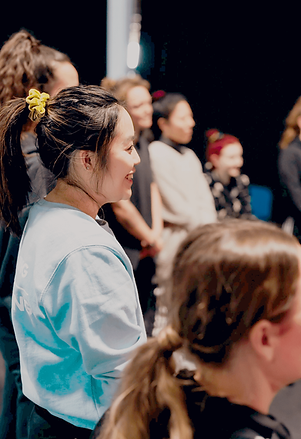Feeling Hip Pain or Stiffness? Start Here to Improve Hip Mobility
- Beth Shum
- Jun 2
- 3 min read
Whether you're a dancer, aerialist, circus performer, or athlete aiming to move with more ease, hip mobility plays a crucial role in performance and injury prevention. One of the most common complaints we see in active individuals is anterior hip pain or hip impingement, often felt as a pinching or stiffness at the front of the hip when rotating or moving the leg.
In this post, we’ll walk you through a simple self-assessment and 3 evidence-based hip mobility exercises you can try at home to improve internal and external hip rotation.
🧠 Why Hip Pain Happens
Like back pain, hip pain isn’t always caused by one issue. Instead, a mix of factors can affect how your hips feel and function:
Limited internal or external rotation
Weak glutes and stabilising muscles
Poor pelvic alignment
Decreased control or body awareness
High training loads without recovery
If your hips feel tight, especially when sitting cross-legged or turning your leg in/out, these are signs that your hip mobility needs some attention.
🦴 Understanding the Hip Joint
Let’s talk anatomy for a moment.
The hip is a ball-and-socket joint that allows movement in multiple planes—flexion, extension, and rotation. Healthy hip function relies heavily on both internal rotation (knee turns in) and external rotation (knee turns out).
Why does this matter?
Because imbalances in rotation often show up as compensations elsewhere—in your knees, pelvis, or even lower back.
✅ Quick Self-Test for Hip Rotation
Lie on your back, knees bent and feet flat on the floor.
Let one knee gently fall outward without twisting your pelvis
Repeat on the other side
Notice: Does one side move further than the other?
Now try letting your knees fall inward toward each other (internal rotation). Again, compare both sides.
This test gives you a quick snapshot of your hip mobility asymmetry.
💪 3 Exercises to Improve Hip Mobility
These hip drills are designed to gently target hip rotation, activate deep stabilisers, and help reduce hip impingement pain.
1. Clamshells with Resistance Band
✅ Focus: External rotation and glute activation
Lie on your side with knees bent and feet together
Place a resistance band just below the knees
Keep your feet touching as you open the top knee like a clamshell
Repeat 10–12 reps each side
📍 Tip: Don’t roll back—keep your pelvis stacked and core engaged.
2. Wall-Supported Hip Rotations
✅ Focus: Control and symmetry in both hips
Lie on your back, feet flat against a wall
Engage your core by gently pressing the lower back into the floor
Slowly open both knees outward and return
Repeat 8–10 reps
Progress it: → Move feet lower on the wall → Lift feet slightly off the wall for extra challenge → Create a diamond shape and perform the same movement
3. Isometric External Rotation Hold
✅ Focus: Strengthening hip rotators without moving
Lie on your back near a wall
Place one ankle across the opposite knee (figure-four position)
Gently press your raised knee into your hand, hold for 5 seconds
Relax and repeat 4–5 times on each side
This is especially effective for performers with hip impingement who need control during loaded movements like squats, balances, or aerial work.
🧘 Tips for Success
Breathe through each movement—exhale with effort
Start slow; quality > quantity
If you feel a pinch in the front of the hip, reduce the range or try a different position
Be consistent: mobility changes with regular, intentional work
📝 Final Thoughts
Whether you’re flipping upside down or flowing through a dance sequence, your hips deserve care. These hip mobility exercises are a great first step to relieve tension, improve control, and prevent future injuries.
Start small. Stay curious. And if you need a bit more support, our team at Flexibility Matters is here to help you assess and build a plan that works.
🌀 Tag us @flexibility_matters or share your progress—we’d love to see how it’s going!





.png)





Comments